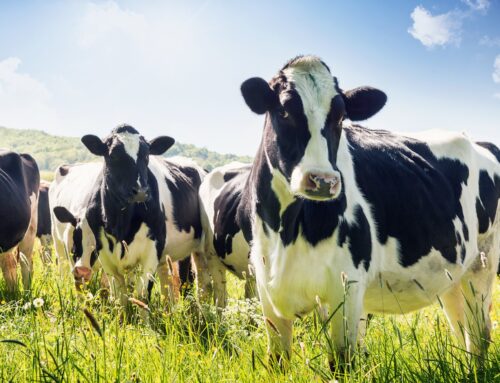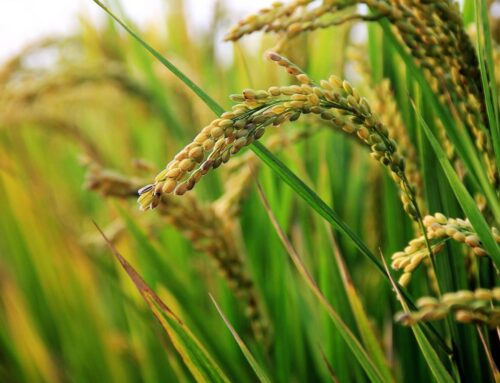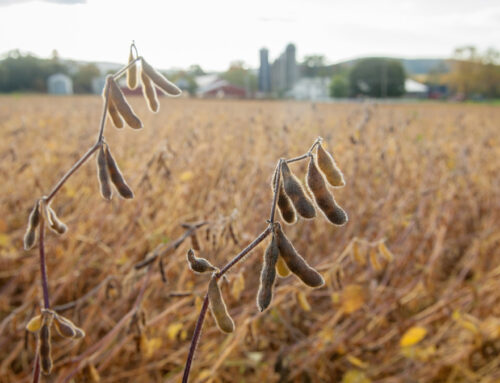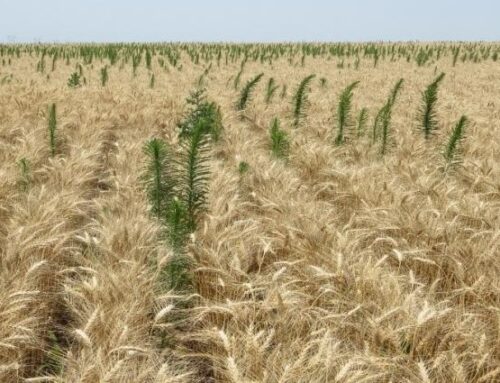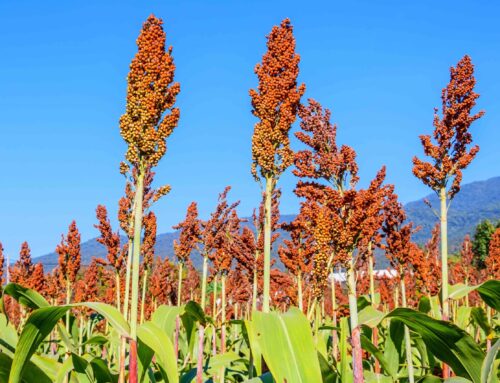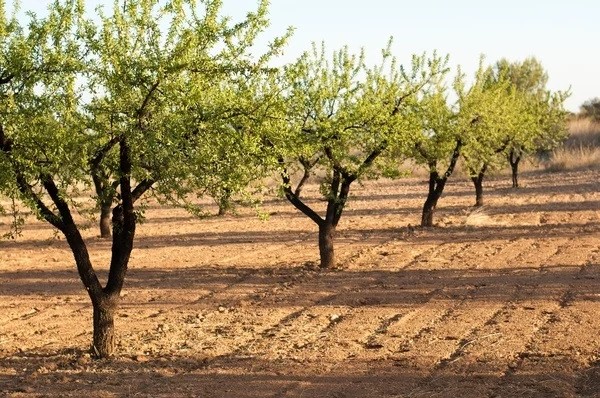
To sequester carbon, farmers need to conserve their most critical resource. Wind blowing, rain falling, and plows passing through the field all erode soils.
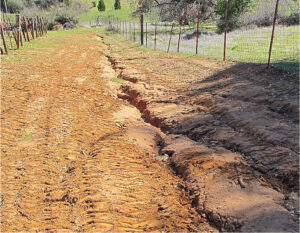
While conservation efforts have slowed erosion, soil is still being lost faster than farmers can replenish it.
Minimizing erosion is the first step to improve soil health and boost carbon sequestration. Luckily for farmers, understanding erosion makes it much easier to combat.
“When you know the process of erosion, you know how to stop it,” says Jodi DeJong-Hughes, a University of Minnesota (U of M) regional Extension educator.
WIND AND WATER EROSION
Wind with speeds as low as 13 mph can move soil particles, making it a powerful force for farmers to reckon with. Wind erodes the soil in three ways:
- Creep: large soil particles being pushed along the ground
- Saltation: soil particles bouncing along the ground
- Suspension: fine soil particles being lifted into the air
Rain is another adversary. Water erosion is a three-step process in which water detaches, moves, and deposits soil particles.
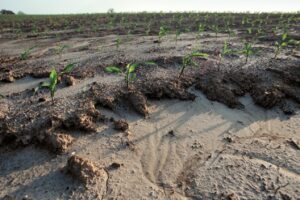 “One raindrop has enough energy in it to move a soil particle 2 to 3 feet,” DeJong-Hughes says.
“One raindrop has enough energy in it to move a soil particle 2 to 3 feet,” DeJong-Hughes says.
The slope of fields can have a significant impact on the amount of water erosion a farmer faces.
“Slope influences the distance that soil will move and the speed that soil can move downhill,” DeJong-Hughes says. “You don’t want speed, because the more speed it picks up the more soil particles it can take with it.” Uncovered soils are the most at risk, making the period from fall to spring particularly hazardous, DeJong-Hughes says.
“Residue is the very first tool in the toolbox,” says Anna Cates, a U of M soil scientist. “Everybody has residue and is able to make some choices about how they manage it over time. Residue protects the soil, slows down water and wind speed, and it can help improve infiltration.”
TILLAGE EROSION
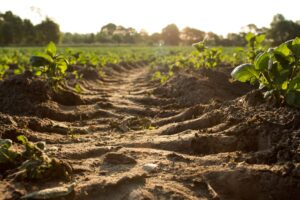 Tillage, or any mechanical movement of soil, is more erosive than wind and water combined. A 1994 erosion analysis by David Lobb, a University of Manitoba soil scientist, and other researchers in southwestern Ontario found tillage erosion accounted for at least 70% of total soil loss.
Tillage, or any mechanical movement of soil, is more erosive than wind and water combined. A 1994 erosion analysis by David Lobb, a University of Manitoba soil scientist, and other researchers in southwestern Ontario found tillage erosion accounted for at least 70% of total soil loss.
“What’s interesting is that you can have wind and water in your field and not have erosion, but you cannot have tillage and not have some erosion,” DeJong-Hughes says.
Soil losses incurred by tillage erosion can be staggering. DeJong-Hughes cites a 2002-2006 USDA-ARS study at Morris, Minnesota, where a moldboard plow tilled highly erodible land.
In 2003, the tillage erosion loss of 27 tons per acre per year was nearly 5½ times as much as the natural 5 tons per acre loss per year.
 Tillage can also increase the wind and water erosion in fields. “When water in the gully area [of the field] moved in, erosion increased another 9 tons per acre,” says DeJongHughes. “So, 36 tons per acre of soil per year were moved. In these areas, we were getting 45-bushel-per-acre wheat. The farmer was basically farming the subsoil. The phosphorus, potassium, and organic matter in those eroded areas also decreased.
Tillage can also increase the wind and water erosion in fields. “When water in the gully area [of the field] moved in, erosion increased another 9 tons per acre,” says DeJongHughes. “So, 36 tons per acre of soil per year were moved. In these areas, we were getting 45-bushel-per-acre wheat. The farmer was basically farming the subsoil. The phosphorus, potassium, and organic matter in those eroded areas also decreased.
“You’re breaking down the aggregates into small particles,” she adds. “One individual clay particle is microscopic and blows away very easily. When clay is aggregated, it’s physically heavier and harder to move.”
The faster a tilling implement moves, the further soil particles will travel. Tillage depth and aggressiveness increase erosion. Tillage can cause crusting, which leads to other issues in the field.
“If you have crusting, you’re not going to get any rain into that soil and you’ll end up with more ponding,” DeJong-Hughes says. “In drought times, we need the soil to collect as much water as it can hold for later in the season. Erosion and compaction counter that.” Disc plows, which pummel aggregates, are more destructive than point and shank plows, which break soil along its natural planes. Even taking small steps into conservation tillage, or reevaluating current tillage management, can significantly improve soil structure.
“The more passes you make, the more you break up that structure, set yourself up for erosion, and bury residue so it’s not on top to protect the soil,” DeJong-Hughes says. “Be less aggressive and stay away from discs.”
CARBON COLLECTION
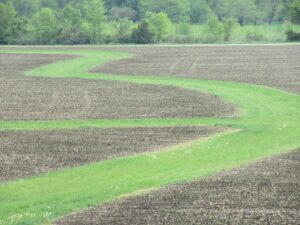 Controlling erosion is essential to building soil health. “If you’re not keeping your soil in place, you can’t be building healthy soil,” Cates says.
Controlling erosion is essential to building soil health. “If you’re not keeping your soil in place, you can’t be building healthy soil,” Cates says.
“Erosion is really a fundamental piece of trying to understand soil health.” Erosion management is also key to maximizing carbon sequestration and boosting profits.
“Carbon farming involves the whole field, including in-field practices like 4Rs, cover crops, and erosion management as well as edge-of-field practices designed to keep the soil and its nutrients in the field,” says Matt Sutton Vermeulen, a partner for The Context Network. “An 82-year-old Australian cattle grazer taught me that everything we can do to slow water down keeps our soils intact, healthy, and productive, and eroded soils flowing into streams are the equivalent of dollars flowing off his land.”
Read the original article – CLICK HERE
